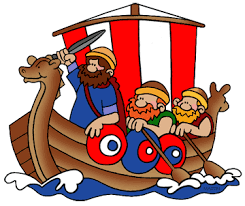“We are not makers of History. We are made by History.”
Martin Luther King
History subject lead: Mr R Dickinson
“We are not makers of History. We are made by History.”
Martin Luther King
History subject lead: Mr R Dickinson

Our school History curriculum is based on a desire to provide our children with memorable learning experiences that reflect our Catholicity, our rich and diverse community and the world within which we live. Over time children will build up a picture of Local, National and World History from the earliest times to the present day. With high expectations for all, we promote support for each child to enable them to develop skills to enquire about the past. At the end of their learning journey, children will have a wide knowledge of famous people and events that have made a significant impact on our lives today. Children will know and understand about the nature of ancient civilisations and significant aspects of British and World History. They will make connections between periods in time and learn how we use a variety of sources to answer our questions about the past.
Our history curriculum draws upon prior learning, wherever the content is taught. The structure is built around the principles of advancing cumulative knowledge, chronology, change through cause and consequence, as well as making connections within and throughout periods of time studied. History is planned so that the retention of knowledge is much more than just ‘in the moment knowledge’. The cumulative nature of the curriculum is made memorable by the implementation of Bjork’s desirable difficulties, including retrieval and spaced retrieval practice, word building and deliberate practice tasks. This powerful interrelationship between structure and research-led practice is designed to increase substantive knowledge and accelerate learning within and between study modules. That means the foundational knowledge of the curriculum is positioned to ease the load on the working memory: new content is connected to prior learning. The effect of this cumulative model supports opportunities for children to associate and connect with significant periods of time, people, places and events.
Our history curriculum strategically incorporates a range of modules that revisit, elaborate and sophisticate key concepts, events, people and places. A guiding principle of our history curriculum is that pupils become ‘more expert’ with each study and grow an ever broadening and coherent mental timeline. This guards against superficial, disconnected and fragmented understanding of the past.
Specific and associated historical vocabulary is planned sequentially and cumulatively from Year 1 to Year 6. High frequency, multiple meaning words (Tier 2) are taught alongside and help make sense of subject specific words (Tier 3).
Learning will be supported through the use of knowledge organisers that provide children with scaffolding that supports them to retain new facts and vocabulary in their long term memory. Knowledge organisers are used for pre-teaching, to support home learning and also as a part of daily review.
It is a high quality and ambitious curriculum supported by high-quality images and diagrams to enrich and inspire learning. In KS1 and KS2, history is taught in focused teaching sessions that sit within a curriculum sequence built around the principles of interleaving and spaced retrieval practice. This ensures full coverage across the whole school.
Our historians will be given a variety of experiences both in and out of the classroom where appropriate to create memorable learning opportunities and to further support and develop their understanding.
Cumulative curriculum quizzes are used to review learning and check that children know more and remember more. Learning is reviewed also on a termly basis, after a period of forgetting, so that teachers can check whether information has been retained.
Children will know more, remember more and understand more about History. Children will understand and use the key skills of chronological understanding, knowledge and understanding of events in the past, historical interpretation, historical enquiry and organisation and communication. As historians children will learn lessons from history to influence the decisions they make in their lives in the future. Emphasis is placed on analytical thinking and questioning and children demonstrate a coherent knowledge and understanding of Britain’s past and that of the wider world, in addition to being curious to know more about the past.
If you were to walk into History lessons at Saint Augustine Webster CVA, you would see:
Year 1 child: “I liked looking at the old photos and pretending to be alive in the olden days.”
Year 4 child: “I loved learning about the Romans and the different battles they took part in. I especially enjoyed learning about the weapons they used.”
Year 6 child: “I enjoyed learning about our local area during WW2 and how it was affected by the war. I also enjoyed learning about how the different things worked back in history.”